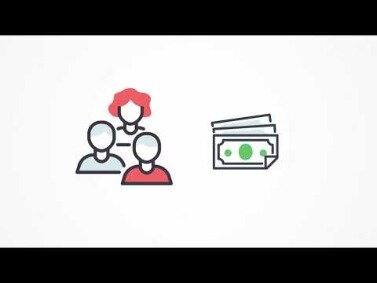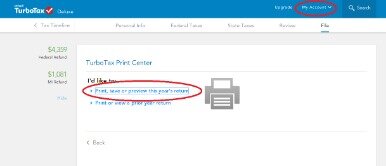Contents:


In the context of DCF valuation, Sensitivity Analysis in excel is especially useful in finance for modeling share price or valuation sensitivity to assumptions like growth rates or cost of capital. Then, multiply that by your effective interest rate, or weighted average interest rate, to get your after-tax cost of debt. In the calculation of the weighted average cost of capital , the formula uses the “after-tax” cost of debt. But often, you can realize tax savings if you have deductible interest expenses on your loans.
A Look At The Fair Value Of Seagen Inc. (NASDAQ:SGEN) – Simply Wall St
A Look At The Fair Value Of Seagen Inc. (NASDAQ:SGEN).
Posted: Mon, 17 Apr 2023 14:41:31 GMT [source]
Debt financing does not dilute the owner’s interest in the company. Interest paid until the loans are paid off, on the other hand, can take a long time, especially when interest rates are rising. Debt capital entails the repayment of the borrowed funds at a later date. This refers to any type of growth capital that a firm obtains through the use of debt. There are long-term and short-term loans available, such as overdraft protection. For businesses that are profitable and anticipated to perform well, the debt is generally less expensive than equity.
He currently researches and teaches economic sociology and the social studies of finance at the Hebrew University in Jerusalem. Making the Discount Rate Formula Simple – Explain it Like I’m a 7th Grader To me, one of the hardest parts of understanding a DCF valuation was the discount rate. REIT Cap Rate Formula with Real-Life Examples The REIT Cap Rate formula, along with Funds From Operations , are two critical REIT ratios to understand and implement when analyzing REIT (Real Estate… I’m using our friend CTRL-F to locate interest expense because most companies don’t list it as a separate line item, they usually combine it with other interest.
Business owners monitor D/E ratios and other financial measures using a variety of tools. C(Rcountry − Rf) also could be the equity premium for well-diversified US or global equity indices if the degree of local segmentation is believed to be small. Lauren is a professional writer, editor, and content marketer who creates high-quality content that’s tied to business strategy and lands with its audience.
Cost of Debt — Public vs. Private Companies
For most large corporations, the federal marginal tax rate is 35%, as this rate applies to all income over $18.33 million. Ltd has taken a loan of $50,000 from a financial institution for five years at a rate of interest of 8%; the tax rate applicable is 30%. The after-tax cost of debt is high as income tax paid by the company will be low as the company has a loan on it, and the interesting part paid by the company will be deducted from taxable income.
The outstanding debt and preference share are available on the balance sheet. The weight of the debt component is computed by dividing the outstanding debt by the total capital invested in the business, i.e., the sum of outstanding debt, preferred stock, and common equity. At the same time, the value of common equity is calculated based on the stock’s market price and outstanding shares. A company’s cost of debt is the effective interest rate a company pays on its debt obligations, including bonds, mortgages, and any other forms of debt the company may have.
What Is A Healthy Debt-To-Equity Ratio (D/E)?
Financial LeverageFinancial Leverage Ratio measures the impact of debt on the Company’s overall profitability. Moreover, high & low ratio implies high & low fixed business investment cost, respectively. Let us take an example of a company ABC Limited to see if it can generate returns. INVESTMENT BANKING RESOURCESLearn the foundation of Investment banking, financial modeling, valuations and more.
This implies that fair valuation is extremely sensitive to the weighted average cost of capital , and one should take extra precautions to calculate WACC correctly. As there are so many complexities in WACC calculation, we will take one example each for calculating all the portions of the weighted average cost of capital. Conventional financial wisdom recommends that companies establish a balance between equity and debt financing. It’s crucial to choose the options that are most suitable for your staff, shareholders, and existing clientele. Most companies seek to establish a balance of equity and debt financing in order to maintain creditworthiness and control over the company’s finances. The formula for calculating the cost of debt is Coupon Rate on Bonds x (1 – tax rate).

If the value of a company’s debt exceeds the value of its equity, the cost of its debt will have more “weight” in calculating its total cost of capital than the cost of equity. If the value of the company’s equity exceeds its debt, the cost of its equity will have more weight. Simply add up the total of all of your company’s credit card balances, loans, and other financing options.
Double-entry Accounting
The higher a business’s credit score, the less risky they appear to lenders — and it’s easier for lenders to give lower interest rates to less risky borrowers. And the lower your interest rate, the less you pay in interest and on your total cost of debt. As an alternative way to calculate the after-tax cost of debt, a company could determine the total amount of interest that it is paying on each of its debts for the year. Companies can raise money by selling stock, or ownership shares, of the company.
Is enVVeno Medical (NASDAQ:NVNO) In A Good Position To Deliver On Growth Plans? – Simply Wall St
Is enVVeno Medical (NASDAQ:NVNO) In A Good Position To Deliver On Growth Plans?.
Posted: Sat, 22 Apr 2023 12:33:19 GMT [source]
The current market price of the bond, $1,025, is then input into the Year 8 cell. For the next section of our modeling exercise, we’ll calculate the cost of debt but in a more visually illustrative format. Provided with these figures, we can calculate the interest expense by dividing the annual coupon rate by two (to convert to a semi-annual rate) and then multiplying by the face value of the bond. As a preface for our modeling exercise, we’ll be calculating the cost of debt in Excel using two distinct approaches, but with identical model assumptions. Higher Cost of Debt → If the credit health of the borrower declined since the initial date of financing, the cost of debt and risk of lending to this particular borrower increases. Because it tells you whether or not you’re spending too much on financing.
What Is Cost of Capital?
If the company has underestimated its capital cost by 100 basis points (1%) and assumes a capital cost of 9%, the project shows a net present value of nearly $1 million—a flashing green light. But if the company assumes that its capital cost is 1% higher than it actually is, the same project shows a loss of nearly $1 million and is likely to be cast aside. The use of these three measures has to be perfectly consistent with the free cash flow discounted and the perspective of the valuation.
It can also tell you whether taking on certain types of debt is a good idea when you calculate the tax cost. Janet Berry-Johnson is a CPA with 10 years of experience in public accounting and writes about income taxes and small business accounting. Debt and equity provide companies with the capital they need to buy assets and maintain their day-to-day operations. Operating leases are separate and off-balance sheet items and thus not included in the interest expense line item. That risk of default drives higher interest rates on their bond offerings to encourage investment. The different credit ratings also reflect the prevailing interest rates available in the market.
Treasury rates, not because of any essential difference in their businesses. And even those that use the same benchmark may not necessarily use the same number. Slightly fewer than half of our respondents rely on the current value as their benchmark, whereas 35% use the average rate over a specified time period, and 14% use a forecasted rate.
This formula is useful because it takes into account fluctuations in the economy, as well as company-specific debt usage and credit rating. If the company has more debt or a low credit rating, then its credit spread will be higher. Equity financing tends to be more expensive because of the higher returns yielded from the stock market. For example, the after-tax cost of debt is the interest they pay on debt minus any possible income tax savings because of the deductions available from interest expenses. Because the tax codes treat any interest paid on debt favorably, the tax deductions from outstanding debt can lower the effective cost of debt the borrower pays. One reason for the cheaper financing is the fixed interest payments, and the other reason is the tax benefits companies receive on the interest expense on the income statement.
Join Free Accounting Education Online Classroom $hide=home
There are a couple of different ways to calculate a company’s cost of debt, depending on the information available. Calculating the cost of debt involves finding the average interest paid on all of a company’s debts. Debt is one part of a company’s capital structure, with the other being equity. The 3 Inputs for the Cost of Equity Formula The value of any financial asset is the present value of its future cash flows discounted to the present. Because of these risks and rewards for both equity and debt, companies tend to balance their use of financing to achieve the optimal balance.
•id⁎ is the cost of debt capital netted by the benefit of debt leverage. Cost of capital enables business leaders to justify and garner support for proposed ideas, decisions, and strategies. Stakeholders only back ideas that add value to their companies, so it’s essential to articulate how yours can help achieve that end. An asset’s initial book value is its actual cash value or its acquisition cost.
- When a firm borrows money, the interest it pays is offset to some extent by the tax savings that occur because of this deductible expense.
- This rate will help us complete our next calculation — after-tax cost of debt.
- If you are new to HBS Online, you will be required to set up an account before starting an application for the program of your choice.
Analysts should be aware that different types of assets and liabilities may be measured differently. For example, some items are measured at historical cost or a variation thereof and others at fair value. An understanding of the measurement issues will facilitate analysis. The balance sheet measurement issues are, of course, closely linked to the revenue and expense recognition issues affecting the income statement.
Estimating the Local Firm’s Cost of Debt in Emerging Markets
Businesses that don’t pay attention to cost of debt often find themselves mired in loan payments they can’t afford. Know what the true cost of borrowing money is before you take out a loan and compare products and rates to get the best deal possible. Let’s say you want to take out a loan that will allow you to write off $2,000 in interest for the year. If the cost of debt is less than that $2,000, the loan is a smart idea.

Hence, the cost of debt is crucial as it gives a chance to a company to save its tax. Ltd has taken a loan from a bank of $10 million for business expansion at a rate of interest of 8%, and the tax rate is 20%. The cost of equity is the cost of paying shareholders their returns. Hence, the cost of debt is NOT the nominal interest rate, but rather the yield on the company’s long-term debt instruments. The nominal interest rate on debt is a historical figure, whereas the yield can be calculated on a current basis. Several factors can increase the cost of debt, depending on the level of risk to the lender.
To calculate the after-tax cost of debt, you need the effective interest rate, or the cost of debt calculated in the previous step, and the tax rate. This means that for every $100 of face value, investors are currently paying $97 for an outstanding bond issued by Bluebonnet Industries. This debt has a coupon rate of 6%, paid semiannually, and the bonds mature in 15 years. That’s a big problem, because assumptions about the costs of equity and debt, overall and for individual projects, profoundly affect both the type and the value of the investments a company makes. Expectations about returns determine not only what projects managers will and will not invest in, but also whether the company succeeds financially.
The t account’s capital cost is the sum of the Cost of debt plus the Cost of equity. Having projected an investment’s expected cash flows, a company’s managers must next estimate a rate at which to discount them. This rate is based on the company’s cost of capital, which is the weighted average of the company’s cost of debt and its cost of equity. It reflects the current level of interest rates and the level of default risk as perceived by investors.
When a firm borrows money, the interest it pays is offset to some extent by the tax savings that occur because of this deductible expense. These tremendous disparities in assumptions profoundly influence how efficiently capital is deployed in our economy. A seemingly innocuous decision about what tax rate to use can have major implications for the calculated cost of capital. It’s critical to use a growth rate that you can expect will increase forever—typically 1% to 4%, roughly the long-term growth rate of the overall economy. A higher rate would be likely to cause the terminal value to overwhelm the valuation for the whole project. For example, over 50 years a $10 million cash flow growing at 10% becomes a $1 billion annual cash flow.
